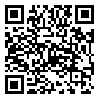BibTeX | RIS | EndNote | Medlars | ProCite | Reference Manager | RefWorks
Send citation to:
URL: http://hayat.tums.ac.ir/article-1-165-en.html
Background & Aim: Pulse Oximeter monitoring technology has become so common in intensive health care settings over the last decade that blood oxygen level is now considered as the fifth vital sign. However, it seems that medical and nursing staffs are not specially educated to operate with the devices. The aim of the study was to investigate the knowledge of medical assistants (residents), nurses and anesthesia technicians of pediatric intensive care units regarding Pulse Oximetery.
Methods & Materials: This is a cross-sectional study. The study population consisted of all nurses, first year to third year medical assistants, and anesthesia technicians who working in intensive care units in Pediatric Center. A questionnaire was used for data gathering that had three sections: the first section as demographic data (occupational condition, record of service in pediatric unit, having the experience of using Pulse Oximetery, having enough knowledge about Pulse Oximetery, and its educational program type) the second section (eighteen short answer questions) in order to determine the participants knowledge about Pulse Oximetery and the third section (four imaginary clinical scenarios) evaluating the participants interpretation on Pulse Oximetery reports and its changes in patients. The collected data were analyzed through descriptive and inferential statistics (Fisher exact test) by SPSS v.15 and EPI6 computer softwares.
Results: The analyses showed that 77.4% of the participants did not pass any educational course regarding Pulse Oximetery, also 67.9% of them correctly identified what Pulse Oximeter measures, and 47.2% of the subjects correctly identified how a Pulse Oximeter works, and 13.2% identified its normal range, but only 26.4% had a correct understanding of the Oxhemoglobin dissociation curve and explained it completely true. It was found that the majority of the participants were wrong in their answers about Pulse Oximeter monitoring. They made mistakes in interpretation of the imaginary clinical scenarios.
Conclusion: The results of the study showed that the majority of pediatric intensive care unit staffs have little knowledge regarding Pulse Oximeter monitoring, then with attention to the vast usage of the technology the necessity of formal educational programs in colleges and retraining courses during employment about the device for health care providers is apparent.
| Rights and permissions | |
 |
This work is licensed under a Creative Commons Attribution-NonCommercial 4.0 International License. |





